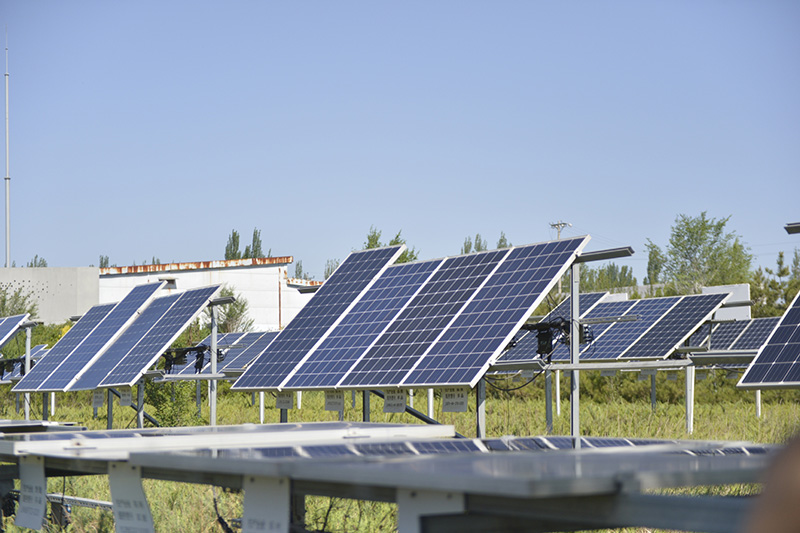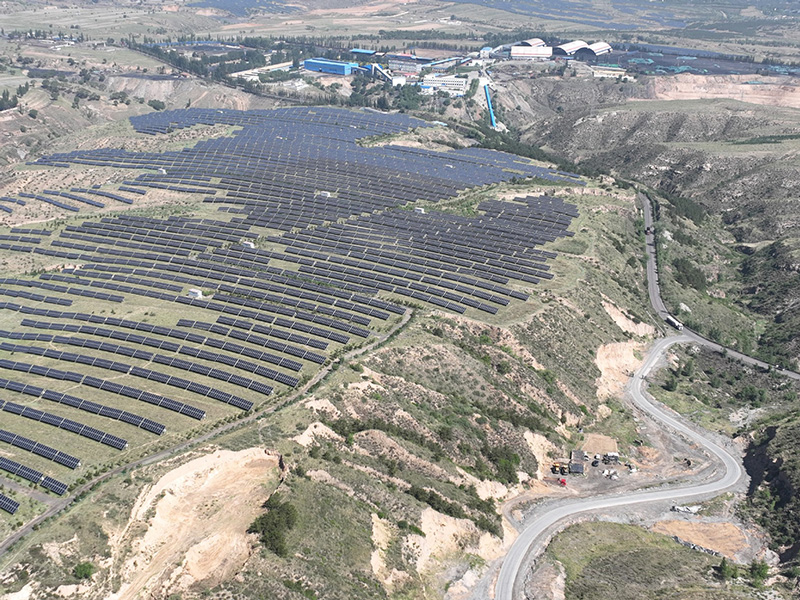
TAIYUAN, June 4 -- Dubbed "sunflowers" by the maintenance staff, rows of photovoltaic panels rotate with the rising and setting of the sun. This consistent provision of clean energy to the grid, amidst the surrounding greenery, has drastically improved the lives of local residents who were once plagued by blowing sand.
The Datong Coal Mining Subsidence Area National Advanced Technology Photovoltaic Demonstration Base is located in Datong City, north China's coal-rich province of Shanxi, where an area of about 1,687 square kilometers has subsided due to prolonged and large-scale coal mining.
The harmonious coexistence of photovoltaic technology and ecological shrubs we see today was once hard to envision, as the subsidence area was previously identified as uninhabitable and unsuitable for industrial use.
Nevertheless, the area boasts advantageous conditions such as abundant solar energy resources and favorable grid access. These benefits have allowed the local government to revitalize the area with the photovoltaic industry.
The base began construction in September 2015 and has drawn a total of 13 enterprises to invest and operate the photovoltaic panels, such as China General Nuclear Power Group and State Power Investment Corporation.
It was built with a total construction scale of 1.5 million kilowatts, comprising twelve 100,000-kilowatt projects, six 50,000-kilowatt projects, three 220-kilovolt gathering stations, and 68 monitoring points for subsidence conditions.
The first-phase project covers 49,600 mu (about 3,306.7 hectares) with a construction scale of 1 million kilowatts. By the end of April 2024, the base had generated a cumulative total of 12.67 billion kilowatt-hours of electricity, according to Wang Zhiwei, chairman of Datong City New Energy Resources Development Corporation.
Over the course of nearly eight years of operation, the photovoltaic modules at the base have undergone continuous upgrades and iterations in an effort to increase power generation efficiency.
"We employ four types of mounting methods for the photovoltaic modules at our base. Among them, the dual-axis tracker can rotate the panels to follow the direction of the sunlight, consistently maintaining the optimal angle and capturing solar radiation more efficiently," said Han Zhicheng, director of an information monitoring service center with the base.
To optimize the use of solar energy resources and efficiently utilize the idle land in the coal mining subsidence area, the base adopted an 'agrivoltaic' ecological restoration model. This involves planting vegetation beneath the photovoltaic panels, maintaining power generation efficiency while promoting soil and water conservation and improving the ecological environment.
Data provided by the municipal energy bureau showed that last year, Datong's new and renewable energy capacity reached 8.75 million kilowatts, accounting for 52 percent of the total installed capacity. The grid-connected capacity for photovoltaic and wind power reached 8.62 million kilowatts, placing Datong in the top tier in Shanxi Province.
New energy, together with traditional energy, has turbocharged the sustainable development of high-tech enterprises and boosted the economic growth of local industries.
In Yanggao County, 89 kilometers away from the base, one of China's largest data center clusters -- the ZDATA Green Cloud Valley -- is working on the construction of a zero-carbon data forest.
"Yanggao County is close to Beijing and rich in energy resources, meeting our high energy demands," said Ma Chao, vice president of ZDATA Group. He noted that the company aims to build a green, low-carbon data computing center, introducing various self-built and cooperative new energy projects to provide clean energy for the data center.
In the future, the municipal energy bureau will focus on new energy projects in the coal mining subsidence area, advance digital innovation in the energy system, meet the energy needs of high-tech enterprises, and promote integrated wind, solar, thermal, and storage energy solutions to drive Datong's energy transition and ecological development.



